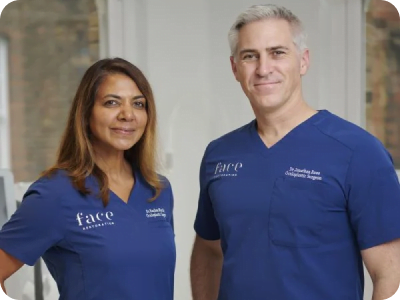Where Aesthetic Eye Health Meets Innovation
The OptimEyes™ Program is a comprehensive, science-led approach to periocular health and aesthetics. It addresses the root causes of dry, watery, and inflamed eyes, blending diagnostics, advanced treatments, microbiome care, and optocosmetic guidance for long-term relief and aesthetic confidence.
Why Eye Health Matters
Modern life—screen time, lash enhancements, cosmetics, and skin conditions like rosacea—can disrupt tear film balance and irritate sensitive eyes. Over 100 million people worldwide suffer from evaporative dry eye, leading to reflex tearing, fatigue, and vision discomfort.
Most cases stem from Meibomian Gland Dysfunction (MGD), where the oil layer of the tear film breaks down. Untreated, this impacts not just comfort and performance, but also the appearance of the eyes.
1. Clinical Diagnosis
Specialist-led diagnostics identify the underlying causes of ocular discomfort:
OSDI-6 Questionnaire
Specialist Eye Care Professional assesses the eyes, periocular area and tear drainage.
Slit Lamp Biomicroscopy: Detects lid margin disease, demodex mites, and bacterial overgrowth, lid malposition and eyelash abnormalities.
Tear Film Analysis & Meibography: Quantifies tear quality and meibomian gland health.
VISIA Skin Imaging: Maps inflammation and rosacea, often underlying ocular surface disease.
2. Innovative Treatment: IPL & LLLT
FDA-approved IPL & LLLT for dry eye uses light to:
Reduce inflammation and rosacea-related redness
Close abnormal eyelid vessels
Lower demodex and bacterial load
Stimulate gland function and improve gland structure (photobiomodulation)
Improve tear retention
Protocol: 4 quick sessions, 2–4 weeks apart; maintenance annually.
3. Eyelid Position Assessment
Tear drainage, overflow and wicking issues or poor eyelid contour (due to punctum malposition, eyelid hooding or ectropion or entropion) can cause persistent watery eyes. These can be corrected with surgical or non-surgical techniques (e.g., neuromodulators).
4. Microbiome Maintenance: Purifeyes™
Purifeyes™, a pure hypochlorous spray, supports daily microbiome control and inflammation reduction. It complements IPL or serves as a standalone for patients without device access. Safe on lids and lashes, it’s also used as a gentle facial toner.
5. Safe Beauty: Èyes Are The Story Optocosmetics
The wrong cosmetics can perpetuate ocular surface disease. As part of the protocol, patients are guided to switch to Èyes Are The Story, a pioneering brand of cosmetics & skincare formulated for:
Sensitive eyes
Contact lens wearers
Those prone to dry eye or ocular rosacea
6. Long-Term Prevention
Ongoing care mirrors dental hygiene:
Regular IPL/LLLT maintenance
Twice daily use of Purifeyes™
Consistent use of ÈYES skincare & cosmetics
Anti-inflammatory nutrition (omega 3, Vitamin D. Gut & Skin Pre, Pro and Post-biotic care)
Optional oral treatments in select cases
SPF 50+ daily protection
OptimEyes™ Protocol was created by Drs. Rachna Murthy and Jonathan Roos, Consultant Ophthalmic, Aesthetic, Oculoplastic & Reconstructive Surgeons, FaceRestoration London (facerestoration.com) & Maison Restorative (Jersey)
Top 10 Nasties: Ingredients to avoid in cosmetics for sensitive eyes*
- Argireline (Acetylhexapeptide-3 or Acetylhexapeptide-8)1
- Benzalkonium chloride (BAK)2
- Formaldehyde releasing compounds2
- Fragrance3
- Isopropyl cloprostenate (analog of prostaglandins such as bimatoprost)3-7
- Parabens4
- Phenoxyethanol4
- Retinols8
- Salicylic acid3
- Tea tree oil (Terpinen-4-ol)9
*Cosmetics include anything that you apply, rub, pour, sprinkle, smear, or spray onto your face and around/on your eyes, inclusive of colors and skincare products.
* *This is not an exhaustive list of ocular-surface-offending ingredients. Please speak with your eye doctor if you have questions about how the use of cosmetics may impact your eye health.
References
- Ozgur O, Murariu D, Parsa AA, Parsa FD. Dry eye syndrome due to botulinum toxin type-A injection: guideline for prevention. Hawaii J Med Pub Health 2012;71(5):120-1237. 2. 3. 4. 5. 6. 7. 8. 9.
- Chen X, Liu Y, Kam WR, Sullivan AG, Sullivan DA. Toxicity of cosmetic preservatives on human ocular surface and adnexal cells. Exp Eye Res 2018;59:193-205.
- Sullivan DA, da Costa AX, Del Duca E, Doll T, Grupcheva CN, Lazreg S, Liu SH, McGee SR, Murthy R, Narang P, Ng A, Nistico S, O’Dell L, Roos J, Shen J, Markoulli M. TFOS Lifestyle: Impact of cosmetics on the ocular surface. Ocul Surf. 2023 Apr 13;29:77-130.
- Wang J, Liu Y, Kam WR, Li Y, Sullivan DA. Toxicity of the cosmetic preservatives parabens, phenoxyethanol and chlorphenesin on human meibomian gland epithelial cells. Exp Eye Res 2020; 196:108057.
- https://www.cosmeticsandtoiletries.com/regulatory/claims/120476614.html
- N Horv.th O, Letul. V, Ruzicka T, Herzinger T, Goldscheider I, von Braunmuül T. Periocular discoloration after using a prostaglandin analog for eyelash enhancement: evaluation with refl ectance confocal microscopy. J Cosmet Dermatol 2017;16(1):18-20.
- Kam WR, Liu Y, Ding J, Sullivan DA. Do cyclosporine A, an IL-1 receptor antagonist, uridine triphosphate, rebamipide or bimatoprost regulate human meibomian gland epithelial cells? Invest Ophthalmol Vis Sci 2016;57:4287-4294.
- Ding J, Kam WR, Dieckow J, Sullivan DA. The infl uence of 13-cis retinoic acid on human meibomian gland epithelial cells. Invest Ophthalmol Vis Sci. 2013;54:4341-4350.
- Chen D, Wang J, Sullivan DA, Kam WR, Liu Y. E ects of terpinen-4-ol on meibomian gland epithelial cells in vitro. Cornea 2020;39:1541-1546.

